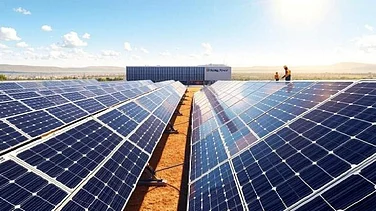With its new electric vehicle (EV) policy launched in March 2024, India is looking to invite potential global EV makers to set shop in the country by reducing customs duties and offering production-linked incentives, according to a whitepaper titled 'Building Bridges in a Global EV Supply Chain: India's New EV Policy', authored by Gaurav Vangaal, Associate Director, Light Vehicle Production Forecast, Indian Subcontinent, S&P Global Mobility.
These benefits come at a time when India's light vehicle production market has grown at a compound annual growth rate (CAGR) of 4.1% over the past decade. India is expected to achieve a CAGR of 4.5% in the next decade and reach 8.5 million units by 2033, as per S&P Global estimates.
The largest EV carmaker Tata and homegrown giant Mahindra are doubling down on their EV game by setting aspirational goals. Tata has set a target of achieving a 30% EV penetration rate by 2030, while the Suzuki-Toyota partnership is working to use India as an export hub for EVs, Vangaal stated in the report.
However, the policy is expected to brand India as a favourable destination for global EV manufacturers such as Tesla, BYD and VinFast – some of whom showed interest in entering India but were hesitant due to high taxation and regulatory uncertainty.
The policy promises to offer incentives to OEMs who commit to establishing manufacturing facilities in the country and contribute towards enhancing domestic value addition (DVA) in the production process.
With this, the government may also be looking to reinforce its broader "Make in India" initiative, which seeks to boost domestic production across various industries. Additionally, more investments will also create newer jobs and foster technological innovation within the automotive sector of the world’s third-largest auto market.
However, the policy has set some pre-conditions for the OEMs to be eligible for the incentives under the new policy.
The eligible OEMs must invest “a minimum of $500 million to set up manufacturing facilities in the country” and make them “operational within three years of receiving government approval”, the whitepaper stated.
The policy has also reduced the customs duty to 15% on the import of completely built-up (CBU) EVs with a minimum cost, insurance, and freight (CIF) value of $35,000. But this concession is valid only for a maximum of 8,000 units annually for five years.
The policy also requires EV makers to achieve a DVA of at least 25% within three years and 50% within five years, failing which duty concessions could be withdrawn.
Additionally, OEMs must provide a bank guarantee equivalent to the total duty foregone or $790 million, whichever is higher, to ensure their commitment to the investment and DVA targets.
However, challenges remain in India’s EV market, which is still in its nascent stage, with EVs accounting for only 2.2% of total vehicle sales in 2023, as per the whitepaper. The success of the policy will depend on the implementation of the policy since the government has in the past been extra cautious in approving foreign investments, the whitepaper stated.



























